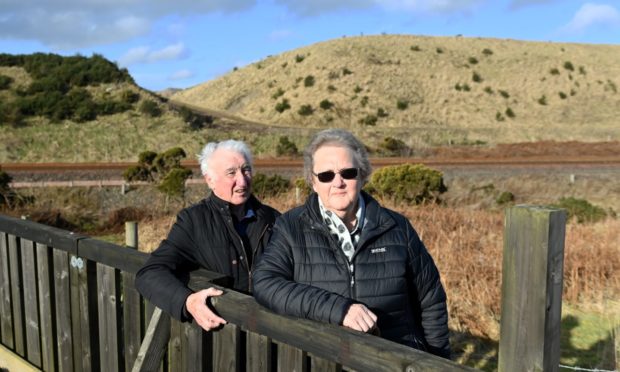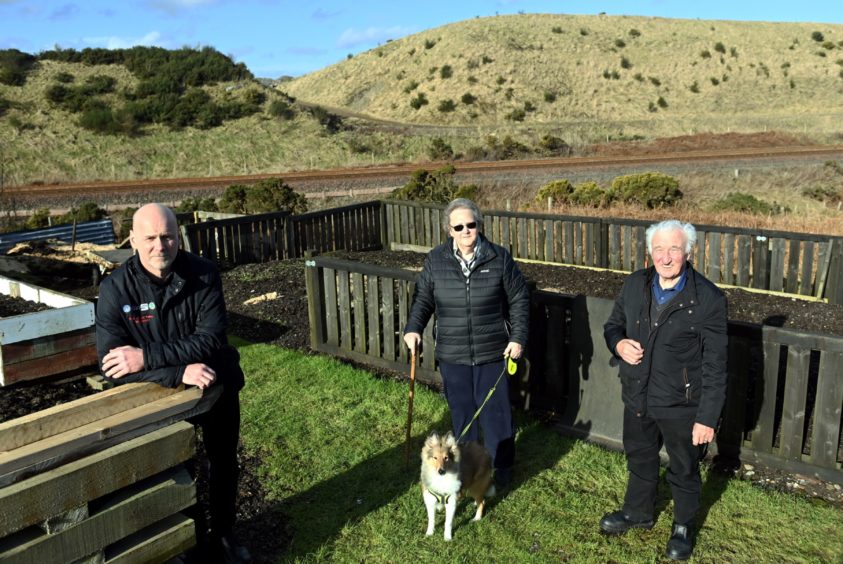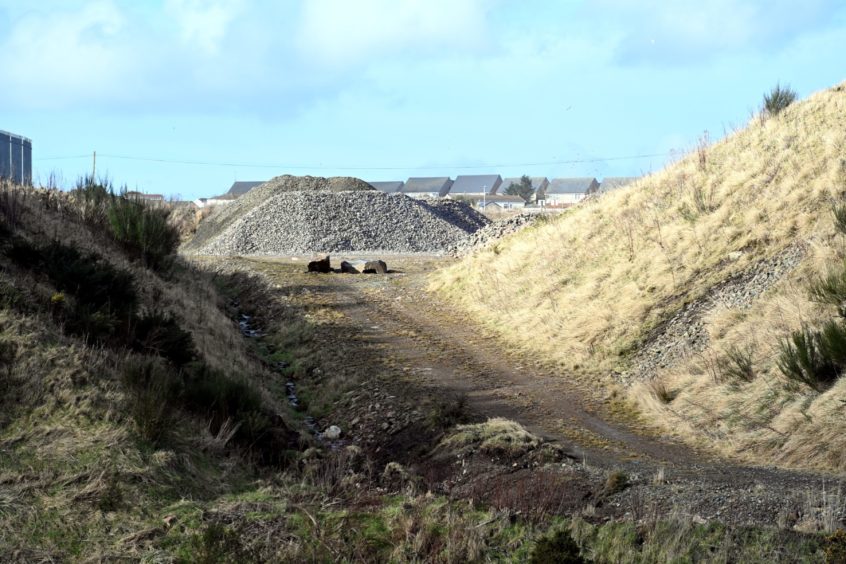Pensioners are fighting plans to store 40,000 tonnes of incinerator ash per year at a former quarry next to their home.
Earlier this year, proposals to use Chap’s Park Quarry at Drumoak as a storage and processing facility for material leftover from the planned Ness Energy from Waste plant in Tullos were thrown out.
Now, waste to energy specialists Rock Solid Processing are seeking to instead build the facility at the former Cairnrobin Quarry, just north of Portlethen.
The company has approached Aberdeenshire Council about the site, which lies much closer to the incinerator at Tullos than the Park Quarry plan.
The plant is planned to generate green energy from unrecyclable rubbish collected in Aberdeen, Aberdeenshire and Moray by 2022.
Concerns from locals
But Colin Stewart, whose parents Mabel and Jimmy live close to the Cairnrobin site, has raised concerns about the potential for dusty, noisy, smelly disruption to their lives.
Mr Stewart said: “They live across on the other side of the railway, just across from where this ash would be stored.
“The concern is how much dust they’re going to get with all this stuff being brought in and processed, as well as how much noise and smell there’s going to be.
“They’ve said when the ash comes in it will be wet and won’t make too much dust, and will form a hard crust – but then if they’re processing it and breaking it up, then surely it’s going to be dusty and noisy.
“Where my parents live, they have up to 20 lorries an hour go past their road, so they have a lot of noise anyways, and adding this on top won’t help.
“It’s going to affect a lot of people.
“Both my parents are in their 70s, and my mum has been shielding having had cancer, so it’s worrying for them.”
Details of Rock Solid’s plans
The Portlethen site lies 3.2 miles from the upcoming East Tullos plant, and if approved, around seven vehicles per day would be taking ash from the incinerator to the facility.
In a consultation document, Rock Solid argued that dust is “unlikely to be an issue”, as the ash would be damp on arrival, and form a “solid crust” once stored.
However, Rock Solid said that noise and dust monitoring will be undertaken at the site.
The company explained that the material would only be stored “within a bunded and lined storage area, with sealed independent drainage”, and only processed during temporary “campaign periods”, which would take place once or twice a year, and last between six and eight weeks.
Outside of processing periods, Rock Solid said the Portlethen facility will be “simply a storage area for material”.
The site would be “approximately six acres in size”, would be accessed using the existing development access from Old Stonehaven Road, and is proposed to be “contained within the existing area of former extraction” at the location.
The Ness energy from waste facility at Tullos will take in non-recyclable waste, and burn it to create heat and electricity.
Once processed, the remaining mix of ash and metals can be used in construction as an aggregate, and as a replacement for sand in cement production.
The entire process is designed to reduce Scotland’s impact on the environment, and help the north-east comply with waste requirements.
A spokesman for Rock Solid said: “Rock Solid are currently engaging with members of the local community and community councils surrounding the proposed site at Cairnrobin.
“This includes meeting with the interested parties as part of a planned virtual consultation exercise on Wednesday 17 February, where we will discuss the proposals and any concerns stakeholders might have.
“Rock Solid are fully committed to carrying out meaningful consultation and will carefully consider the views and opinions obtained from the local community before making an informed decision on a future planning application.”
Consultation
Rock Solid aims to submit a full planning application next month.
The company has encouraged anyone wishing to submit feedback on the proposals to do so before 5pm on March 3.


